Her Murder Was Tied to Ted Bundy. Then the Case Went Cold.
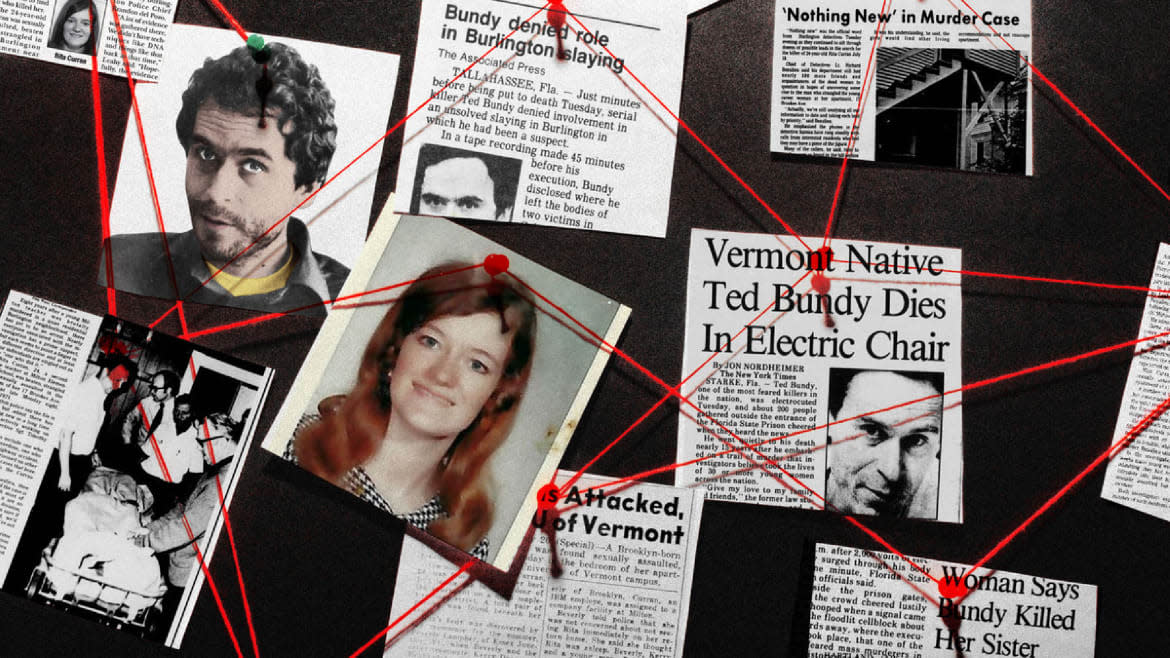
It should have been Rita Curran’s time to shine.
It was July 1971, and the 24-year-old had just moved into a ground-floor apartment on Brooks Avenue in Burlington, Vermont, with two roommates, marking the first time she lived outside her parents’ home. On her summer break, the second-grade teacher at Milton Elementary School took graduate courses at the University of Vermont and worked part-time as a chambermaid at the nearby Colonial Motor Inn.
Curran was described in one newspaper account as “quiet, almost painfully shy.” But she had recently put herself out there and joined a local barbershop quartet. According to a local report at the time, she was practicing alongside them until about 10 p.m. on the night of July 19 before going home, only for her roommates to leave about an hour later for a late bite with one of their boyfriends.
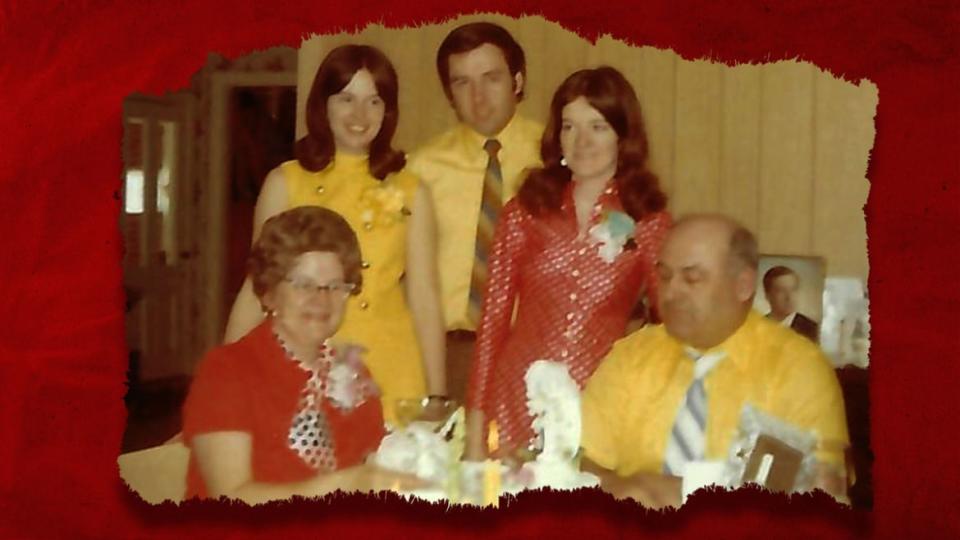
1971 Burlington Free Press Family photo
“We were gone maybe two or three hours,” Paul Robinson, who was dating one of Curran’s roommates and had been staying at the trio’s apartment at the time of the murder, told The Daily Beast. “We had asked Rita to join us that night, but she said no.”
Robinson said he still remembers the screams when Curran’s roommate found her fatally strangled on the floor of their shared bedroom. She had also been brutally beaten and sexually assaulted, police would later determine, setting off a frantic search for the killer in a college town that doubles as the most bustling city in the Green Mountain State.
“This kind of horror was unheard of in Burlington, Vermont. It was a very innocent time,” Robinson, 74, said. “I can’t tell you how fast deadbolts flew off the shelves after Rita’s murder.”
Despite the public attention and decades of work on what is considered the oldest case still being actively investigated by the Burlington Police Department, authorities have never charged anyone with Curran’s murder. In fact, they’ve never made an arrest.
At one point, investigators thought the crime could have been the work of notorious serial killer Ted Bundy, who was born in Burlington and at one point was believed to have been in the area that summer. Investigators discounted that theory after speaking with him prior to his 1989 execution, but local cops told The Daily Beast they were not prepared to spare anyone from a fresh look in the ongoing probe.
“All original suspects and persons of interest are on the table at this point, including those who were previously ruled out based on statements or single pieces of evidence,” Burlington Police Detective Thomas Chenette told The Daily Beast. “The case is considered open and is being actively worked.”
For the Curran family, however, the realization that the case is now half a century old “confirms that a resolution in our lifetime to Rita’s murder is not going to happen,” as they said in a recent statement.
“As a family, in our prayers, we will never give up our deepest private hope. Rita’s story has a home in our family legacy forever,” they added. “We recognize that over time, memories fade, evidence ages, the perpetrator may be dead, interest in this story wanes. We know Rita’s death did not happen in a vacuum. Somebody somewhere knows what happened that night on July 19, 1971, and they will take that information to their grave. May God have mercy on their soul.”
The family did not respond to a request for additional comment for this story.
At the time of Curran’s murder, Burlington was the kind of place where violent crime “was not a common occurrence,” says Brandon del Pozo, who oversaw the now-50-year-old case when he was Burlington Police Chief for four years this past decade.
“It’s the kind of case that you never forget,” del Pozo told The Daily Beast. “From what I understand, it happened in a community that people felt really safe in, so this gruesome killing was extra shocking.”
That may have been why Curran’s roommates did not suspect anything was awry when they went to bed on the morning of July 20 after a late night at a nearby restaurant, Robinson said.
“When we all got home, we assumed she was asleep and we soon went to bed ourselves,” Robinson, who was a 23-year-old mechanic fresh out of college at the time, told The Daily Beast.
It was Beverly Lamphere—rather than Kerry Duane, the other roommate living with Curran, and Robinson’s girlfriend at the time—who went into their shared bedroom shortly after 1 a.m., and found Curran’s partially nude corpse lying directly inside the bedroom door. Robinson said he remembered Beverly yelling at him to come over before “she opened the door and showed me Rita.”
“I was the one that called the police. I told them there had been a murder,” he said, adding, “I have always had a question about whether Rita was still alive when we got back into the apartment that night.”
Lamphere’s family did not respond to a request for comment; she passed away in May. Attempts to reach Duane for this story were unsuccessful.
The two roommates and Robinson were all cleared of any involvement in the crime.
According to a Burlington Free Press report, police said Curran’s “purse, which contained cash and all her personal papers, including her driver’s license, was on the floor directly behind the door,” prompting investigators to conclude it was not a robbery. Later, police also noted there was no indication of forced entry into the apartment.
According to the chief medical examiner, Curran’s face and head had been badly beaten, and there were indications she had been a part of an “intense struggle,” including being sexually assaulted. Ultimately, Curran died of “manual strangulation,” the examiner determined.
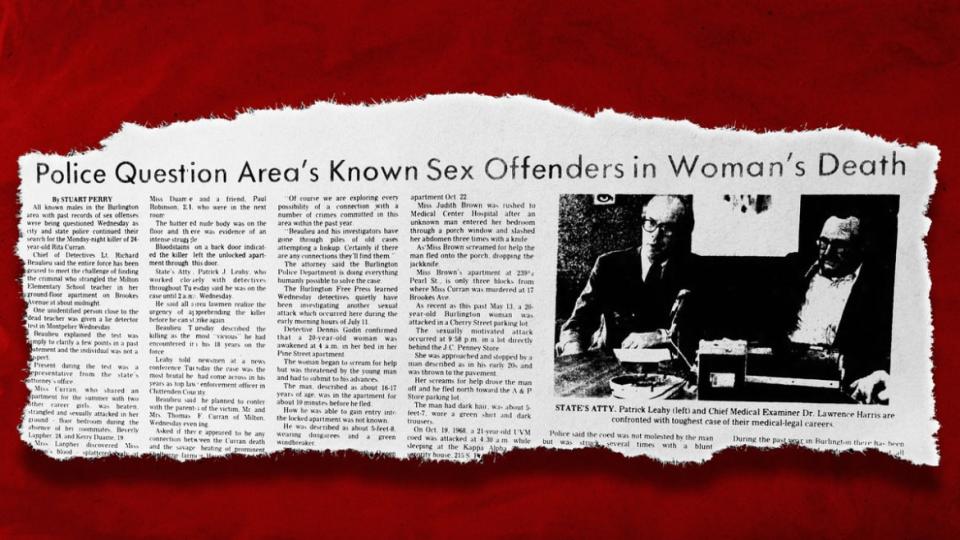
The Burlington Free Press Thu Jul 22 1971
News reports at the time flagged that neighbors did not hear any loud sounds coming from the apartment the night of the murder. Robinson was skeptical, telling The Daily Beast that he remembers the walls being extremely thin in the two-bedroom apartment, and “the idea that nobody heard anything is almost impossible.”
“I have to believe that someone heard something that night,” he added.
In an April 1972 report from the Free Press, police said they had interviewed about 200 people in relation to the case, and that several people close to Curran had taken lie-detector tests.
“This sort of thing didn’t happen in Burlington,” del Pozo said. “It sent shockwaves for sure.”
Later, according to another local report, police would learn that Curran had received “mysterious phone calls late at night” prior to her murder, and had told her friends about the odd occurrences. Rumors started to swirl about who would have possibly been involved in the teacher’s slaying, including that Curran’s killer was the “son of a prominent judge,” according to a 1976 Burlington Free Press story.
“We were getting strange phone calls before Rita’s murder. It was a random occurrence, it wasn’t anything that happened every day or a particular time, but it only was in the evening from what I remember,” Robinson said. “We were all concerned about the calls. It was really creepy.”
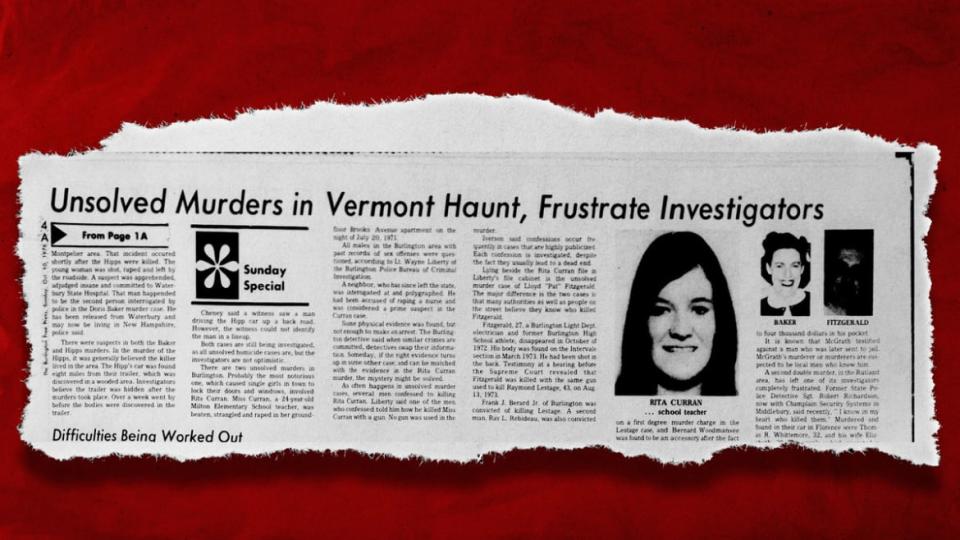
The Burlington Free Press Sun Oct 10 1976
Police at one time considered a neighbor, who was not named, as a “prime suspect” in the Curran case after physical evidence was found at the scene, the report states. The neighbor, however, was not arrested after being voluntarily interrogated and polygraphed. The same report cited police as saying that several men confessed to Curran’s murder—but all were later determined bogus, the sad result of the case being so high-profile.
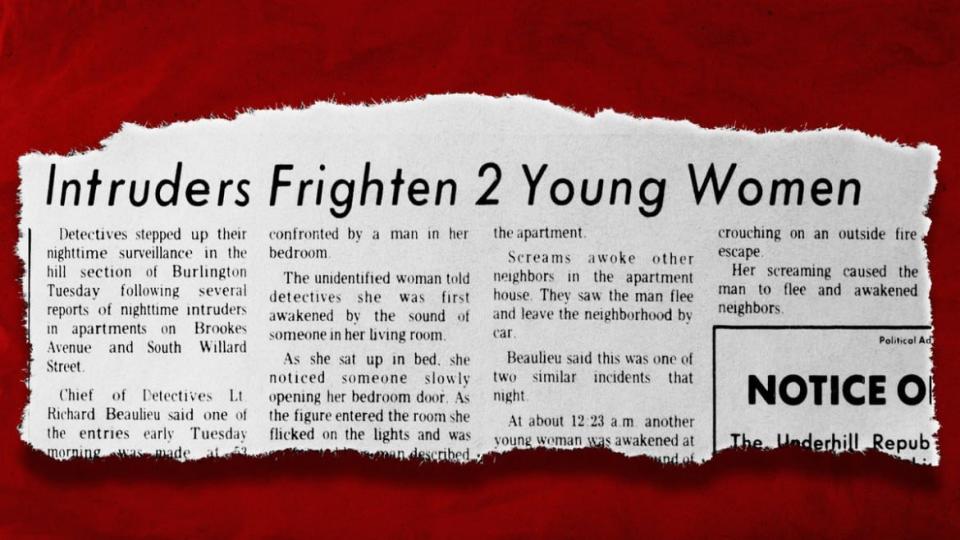
The Burlington Free Press, Wed Aug 30 1972
Robinson said he did not remember any particular suspect, but suggested that police pointed the finger at him at one point because he was the only male who was staying at the house. After an interrogation and polygraph test, however, he said police ultimately concluded he could not have been involved in the grisly crime.
“The three of us were told we were not allowed to leave Burlington for the first month of the investigation,” he added. “It was nerve-wracking. Having someone think you’re capable of murder stays with you.”
Hype around the investigation was so intense that authorities instituted a news blackout around the case in its immediate aftermath. It ended in September 1971, when Chittenden County State’s Attorney Patrick Leahy announced his intention to present evidence to a grand jury in relation to Curran’s murder. It is not clear if a grand jury was ever convened, but charges were never officially filed in the case. Leahy, who is now the senior U.S. senator from Vermont, did not respond to a request for comment.
A spokesperson for the Burlington Police Department told The Daily Beast they did not know about any grand jury meeting in 1971, but noted that “if it did… nothing substantive came of it that made any lasting direction for the case.” The Chittenden County State’s Attorney Office did not respond to a request for comment.
Several potential suspects were vaguely reported about in local media, including one individual who died of a drug overdose and another who was killed in a car crash on the highway. But no one was ever arrested or charged for the crime.
As the case went cold, Curran’s family’s anger only increased. At one point, her mother even told the Free Press she believed her daughter was the victim of a “cover-up” of some kind, though the nature of the alleged plot was never explained.
“I wish to God there was some kind of settlement to relieve our minds,” Mary Curran, who died in 2002, told the outlet on July 23, 1979. “We felt a lot more could’ve been done but wasn’t for political reasons.”
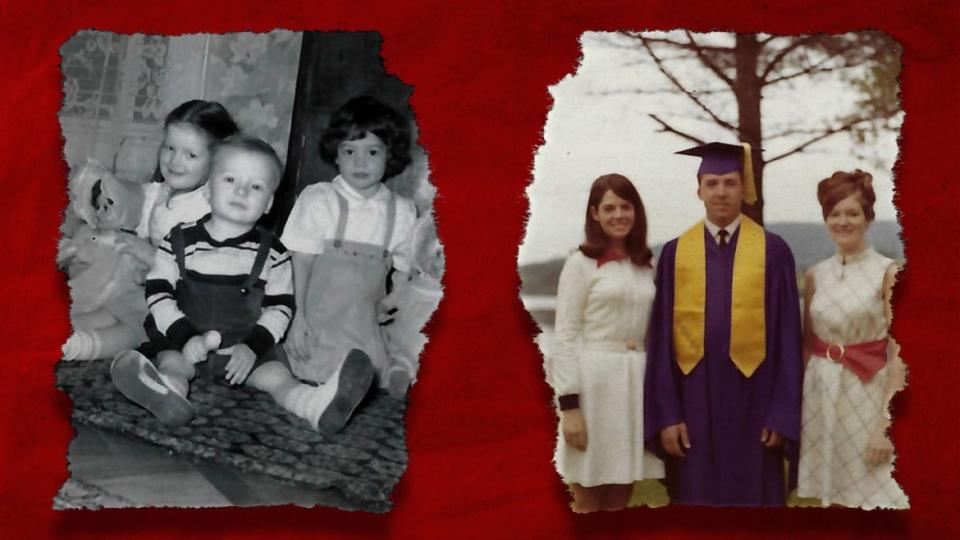
(L) 1950s Curran siblings, (R) 1968 Curran Siblings
Curran’s mother could not have imagined that her daughter’s case would gain even more attention about a year later—when she was named as a possible Bundy victim in the late Ann Rule’s 1980 classic The Stranger Beside Me.
In the book, retired FBI agent John Bassett told Rule that there was a “remarkable resemblance between Rita Curran and Diane Edwards,” Bundy’s first girlfriend. Rule also noted in the book that Curran worked near the Elizabeth Lund Home for Unwed Mothers, where the murderer was born.
The connection was investigated by the Burlington Police Department, local cops confirmed to The Daily Beast. But Detective Chenette said the evidence suggests Bundy was not in Vermont at the time of Curran’s murder.
“As far as the Bundy connection, he was born in Burlington, the manner of death would fit his later MO, and there is some controversy as to his whereabouts in 1971,” Chenette said. “He is on the suspect list; however, no direct connection has ever been made.”
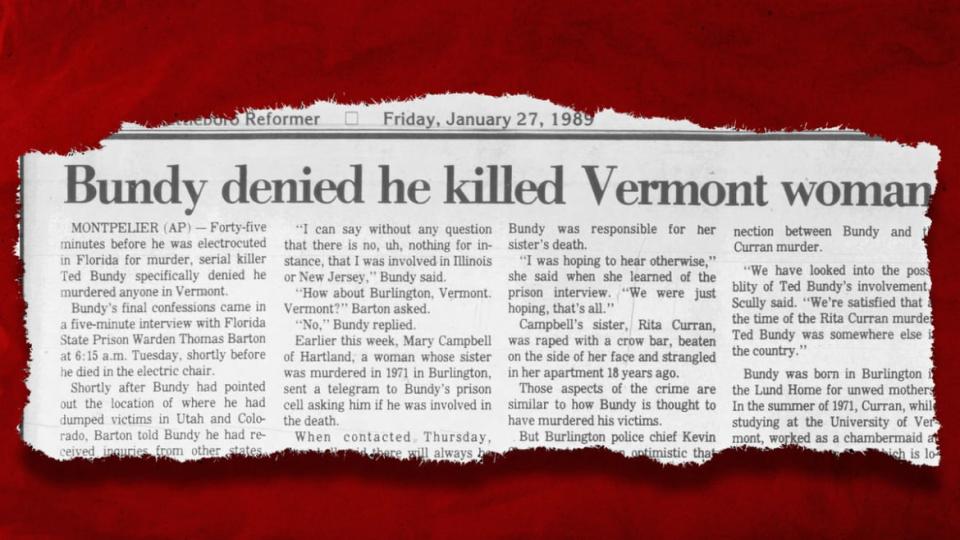
The Brattleboro Reformer, Fri Jan 27 1989
The news of Bundy’s possible role in the grisly crime brought still more interest to the case. According to a January 1989 article in the Brattleboro Reformer, Curran’s sister even sent the convicted killer a telegram on death row to ask if he was involved. It is not clear if Bundy ever responded, and Mary Curran Campbell did not respond to a request for comment.
Curran was even a topic of conversation in Bundy’s five-minute confessional at the Florida State Prison just moments before his Jan. 24, 1989 execution. According to an Associated Press report at the time, however, Bundy denied committing any murders in Burlington—after admitting to leaving the bodies of two victims in Colorado and Utah.
“Once you kind of look at Curran’s case, it’s clear that Bundy was not involved,” Tiffany Jean, an archivist and legal librarian who has extensively researched Bundy’s cases, told The Daily Beast. “Making the connection at one point—to me—was just grasping at straws.”
While public interest in the case waned as the years went on, del Pozo said the Burlington Police Department’s commitment has never let up.
During his four-year tenure as chief, he said, the department was successful in closing “every shooting and murder”—giving them space and resources to actively pursue Curran’s case, which was already decades old.
“We were sending things to labs, interviewing relatives of possible suspects, collecting new DNA. We were making sure we’re looking at all avenues,” del Pozo, who joined the effort in 2015, said. “It was an extremely active 46-year-old investigation.”
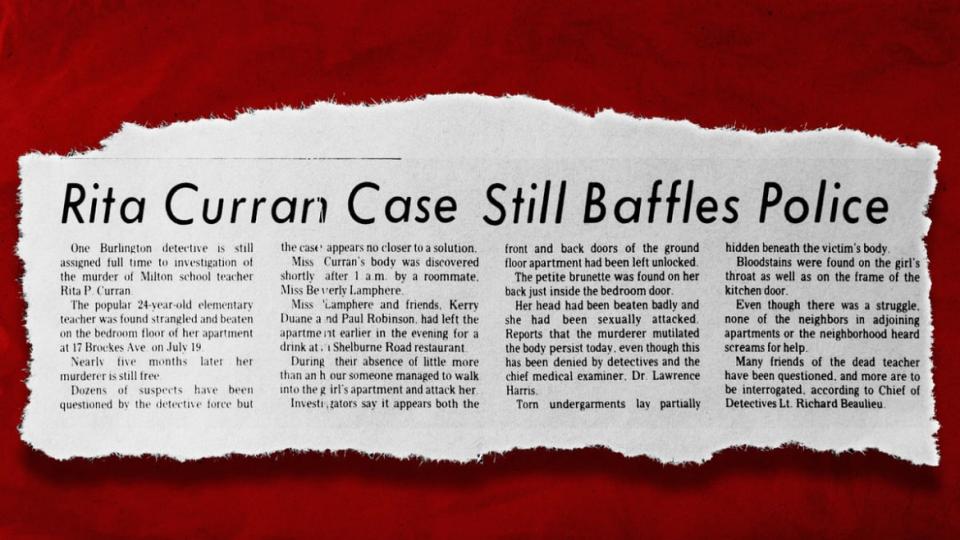
The Burlington Free Press, Wed Dec 15 1971
While del Pozo could not go into the details of the investigation because it is ongoing—and he is no longer a member of the Burlington Police Department—the former chief did argue the fresh look into the case was at least partly successful. He went so far as to say there were “active leads that were promising at the time.”
One reason he prioritized the case and interviewed witnesses and family members who were in the area in the ’70s, Del Pozo said, was the ticking clock on those involved.
“[Curran] would have been roughly 72 years old now. So her killer could still be alive, since I doubt he was way older than her,” he said. “But that does mean that time is running out.”
Del Pozo added that since forensic technology was in its infancy when Curran was murdered, “a trove of evidence” and DNA samples may have been overlooked. He insisted that if the murder had happened today, “an arrest would have happened quickly.”
Since Burlington investigators only had limited information from decades prior, Detective Chenette said, in 2019 the agency decided that the best chance of identifying Curran’s killer was to add more resources and fresh perspective to the case. To do so, the team enlisted the help of a dozen detectives, identification technicians, and officers to reexamine historical data and evidence and spend time tracking down aging witnesses.
“Time and scope are our two largest challenges,” Chenette told The Daily Beast. “The amount of evidence that has been collected over the years is immense, as this has been one of—if not the—most investigated case[s] in the history of the Burlington Police Department.”
“We believe this case is absolutely still solvable, but time is of the essence,” he added. “The reality is that evidence and memories degrade over time, so we decided to give our maximum effort now, as many of the witnesses and involved parties are still with us and can be contacted.”
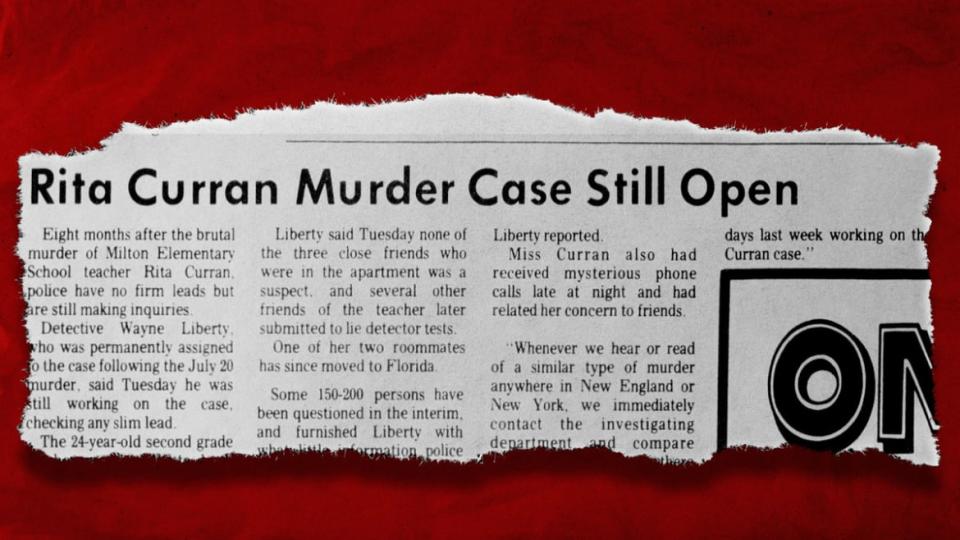
The Burlington Free Press, Wed Apr 5 1972
The sheer amount of information surrounding the case makes Joseph Giacalone, a retired New York Police Department homicide detective who once led a cold-case squad in the Bronx, think it’s still too early to give up hope.
Based on his decades of law enforcement experience, Giacalone said that the facts—including that Curran was sexually assaulted and beaten—lead him to believe she knew her killer.
“To me, it stinks of a personal relationship. Love, money, or drugs are always the biggest motivators,” he said. “Now, when this case occurred, we didn’t know how important DNA collection was, or that you couldn’t put it in plastic because it degrades blood, fluids, and everything else. That’s hard to work around.”
He added that DNA technology makes it possible for the Burlington Police Department to find Curran’s killer even if they are already dead. A slew of previously cold cases has been solved this way, including the 1989 murder of a Las Vegas teen in which investigators used about 15 DNA cells to find a match, the 1971 murder of a 15-year-old Illinois teen stabbed 36 times, and the slew of murders and rapes that led to the infamous 2018 arrest of the Golden State Killer.
“With all the new advancement, including familial DNA, all you need is one person to send in a sample,” he said. “Murder cases are never closed until an arrest is made. They just need that one break.”
For Robinson, while it was encouraging that police were still actively looking into the case, the horror of the summer of 1971 will haunt him for the rest of his life.
“I still get nightmares about that night,” he said. “I hope they catch whoever did this or figure out what happened. But all I have to say is that whoever was responsible, this person was evil. Pure evil.”
Get our top stories in your inbox every day. Sign up now!
Daily Beast Membership: Beast Inside goes deeper on the stories that matter to you. Learn more.

